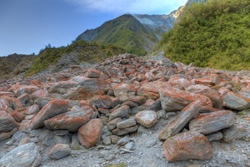Robotics for ground safety and monitoring
Novel robotic equipment can replace humans in dangerous and costly situations such as landslides. Such equipment can survey the ground, drill in soil and release pockets of water. The EU-funded project 'A remotely controlled autonomous walking and climbing robot for faster and safer landslide monitoring, slope stability analysis and consolidation' (Saferdrill) developed a climbing robot to conduct deep drilling in harsh environments. The project worked on defining the requirements and design for the robot to build a prototype and associated remote control system. The project team developed virtual prototyping for different modules of the robot and then proceeded to manufacture its different parts. In the first phase, these modules included the legged robotic platform, drilling component, control system and human machine interface, all of which were fully prototyped. This was followed by the rope tensioning device, navigation system and appropriate sensors. The Saferdrill team then fine-tuned all the separate parts, including hydraulic, electrical and mechanical components, thus enabling the robot to operate smoothly in severe environmental conditions. Team members also addressed issues such as resistance to vibration, dust, rain, shocks and different light conditions. Moreover, a three-dimensional (3D) imaging software to estimate depth was also developed. This and other software modules allow operators to analyse data from the system's sensors and provide real-time information on how to proceed. Initial tests on the prototype were so promising that project partners filed for a patent to protect the new technology. Once the system is exploited, local governments, geologists and experts in related fields will have a powerful new tool to improve ground safety and save lives.

